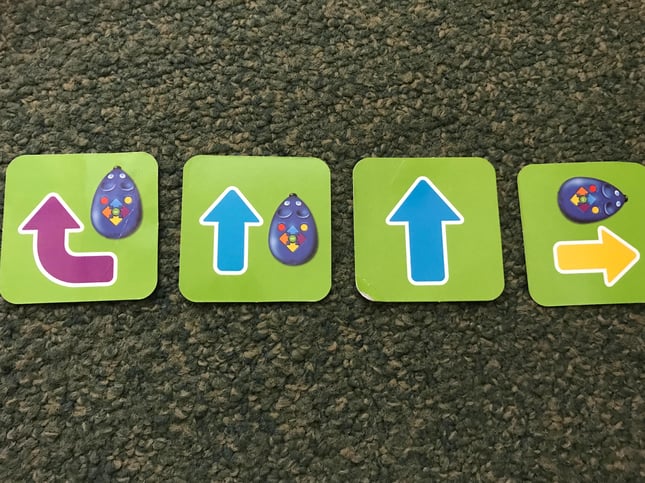By Kelly Paredes, M.Ed., CIT
Computer Science and Educational Technology Specialist
Pine Crest School offers a robust academic curriculum with a variety of academic opportunities including arts, athletics, and computer science.
Learning how to script code can be challenging for new coders. Frequently, learners want to give up on a challenge, seek out only the answer, or become frustrated with the task. Coding instruction can sometimes seem like a daunting task. 
However, getting over one of the first roadblocks— "I am not a coder." — is one of the most rewarding breakthroughs that can be made for a coding student. How do we get our young coders to a breakthrough point and once there, maintain that momentum?
1.) Repetition
My physiology and anatomy teacher always said, "The only way to really do well in this course, is by repetition, repetition, repetition!" Repeatedly performing an action or activity is an effective method to help students not only strengthen a connection, but also help them to build confidence and master a skill.
However, there is a difference in just repeating sentences and directions to a student versus teaching a new skill repetitively. Practice saying it differently, in a funny way, with new context, or with a new tool! Mastering the skill of mindful repetition is where students start to notice the similarities in what is being taught, and enables better engagement in the classroom.
2) Understand the students’ beliefs about their abilities
Get to know your students quickly. Get to know their names, listen to how they communicate their feelings, and identify the strengths early on in the course.
What are the words that a student repeats when frustrated? Is it a feeling of not being capable or not "good enough" at coding compared to others? Is it a feeling of insecurity or neediness? Or simply not trying anymore? Are they perfectionists and afraid to make a mistake? Or is it just plain negativity?
One of the first steps in becoming more resilient is to know our strengths and weaknesses. Helping students to be more aware is one step closer to creating a positive learning environment. 
3) Circle time to share proud moments
About five weeks into teaching python to seventh graders, we hit an all-time low. The topics were getting harder, and energy was diminishing. The stress from other classes compounded with learning a completely new programming language was beginning to weigh heavily on the students.
Students were unmotivated and at an important tipping point. I knew we need a change of pace in the classroom. I called a circle time activity, told them to put down their computers, shut the books, and put their assignments on hold. We all sat on the floor and our circle time pep talk began.
I started circle time, and acknowledged the objectives that the students have already met and then I told them why I was proud of their successes. I then asked the students to think for a moment about a time in the past four weeks when they were proud of an accomplishment or had felt good about a lesson. The circle time injected a sense of accomplishment in the class and we left class with a better mindset.
The next day, expressions and feeling had changed and we were back at it, hacking a code!
4) Model situations that you found challenging.
Jann Mayer from IDEO.org says, “Storytellers can navigate a room through a whole tide of emotions.” Storytelling has the ability to give students hope when the coding optimism gets low, so when emotions seem to be flailing, tell your story; just make sure it is a good one.We were all learners at one point. Think back about your challenges that you first experienced in coding. How did you overcome them when you felt like giving up? How did you turn yourself around? We have all been there, so why not share your experience in a motivating story and let your students hear your challenges with learning how to code.
Do not be afraid to tell them about your feelings of failure and hopelessness with a specific topic; they will appreciate you and your honesty.

5) Take time to play
It is okay to take a day or two to play with the cool toys of tech. Let the students play with the tools without having to code them or produce a product. Allow them to experiment with block code, play a coding game, or just play with a robot. Give them time to remember why we are all learning how to code.
The benefits of organized play and laughter can help students to work harder on the coding days, especially if they know soon it will be "Fun Friday" or "Why Not Wednesday."
So relax, be resilient, and have fun coding!
For more information or to learn new methods of instruction alongside our teachers at the Innovation Institute, please contact us at 954-492-6671 or eddesign@pinecrest.edu.